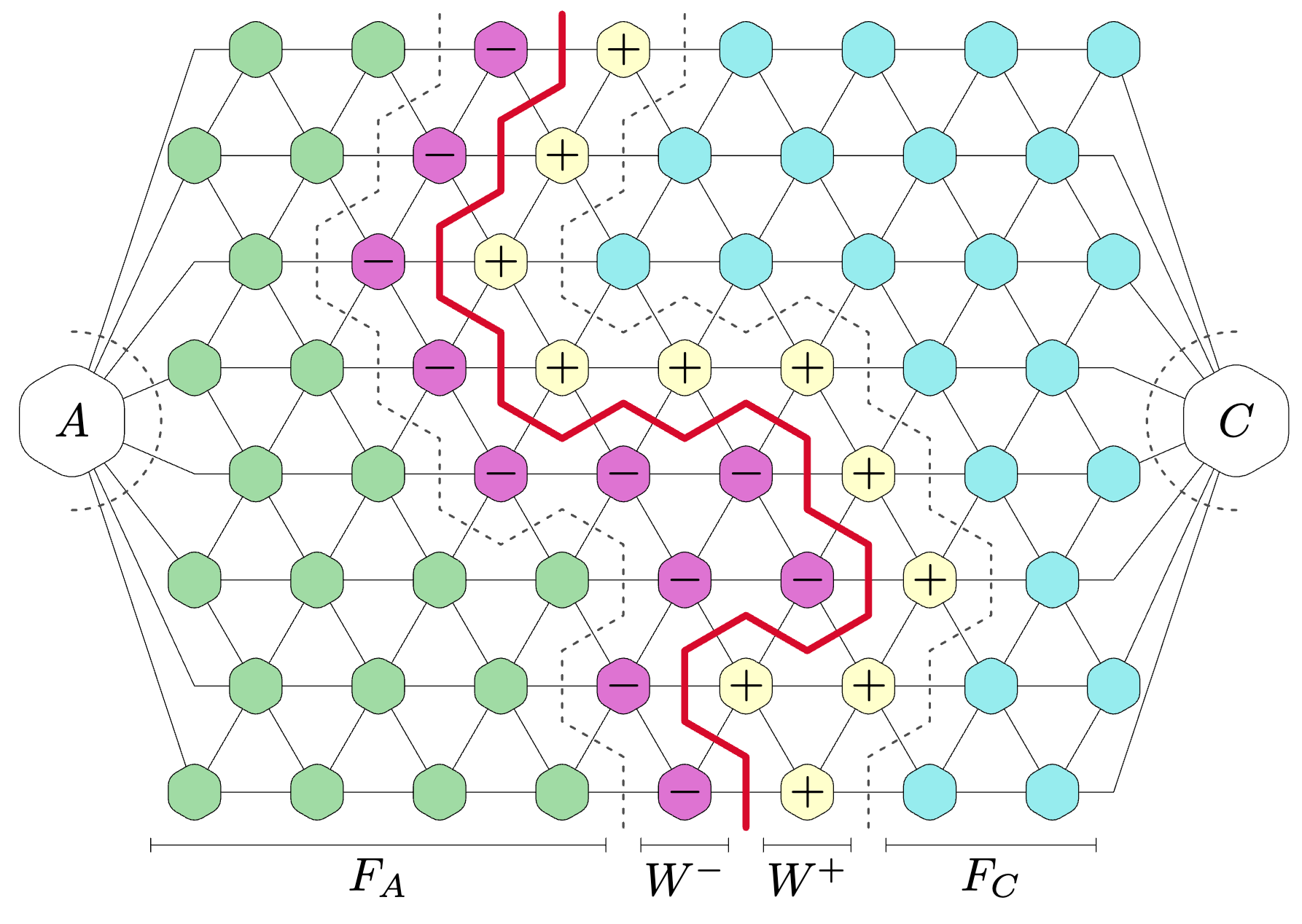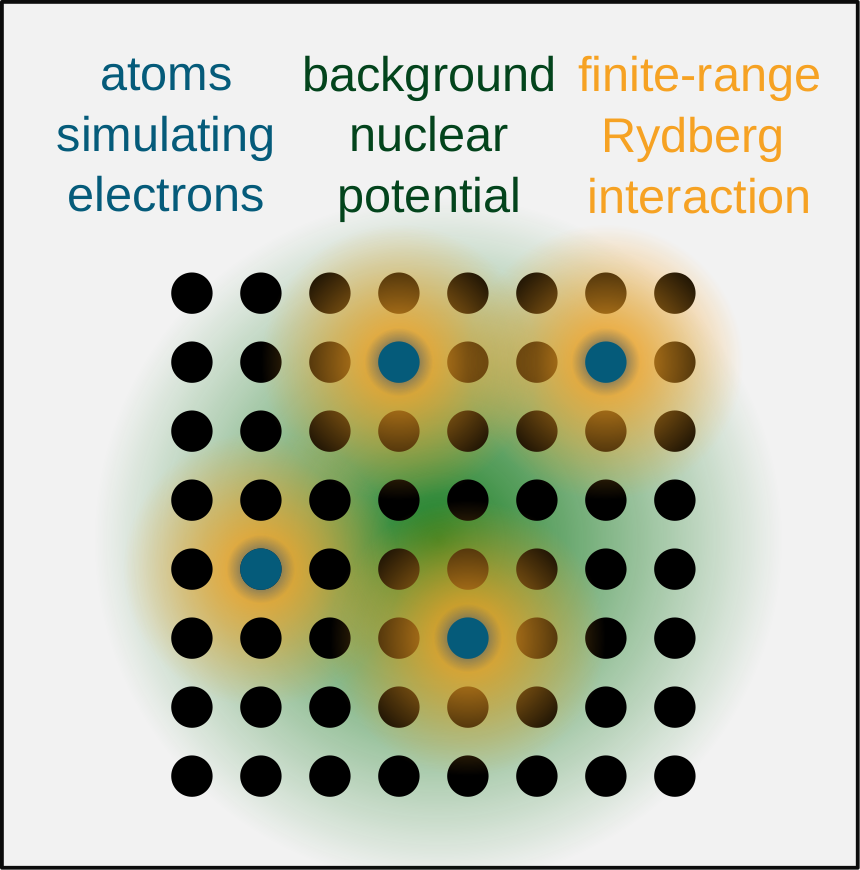Research
My research is motivated and inspired by the rapid development of experimental setups in which many-body quantum systems can be controlled to a high level of precision, allowing one to use them for quantum simulation, computation, or metrology. For a complete list of publications please refer to arXiv or google scholar.
Many-body quantum information theory #
The fields of statistical physics and information theory share deep connections. Statistical physics has inspired important optimization algorithms, and the rich physics of frustrated systems (e.g., glasses) can be related to the computational complexity of corresponding optimization problems.
Understanding the complexity of quantum many-body problems is a fascinating endeavour. With the advent of quantum computational devices, it also becomes increasingly relevant practically. A major frontier is to delineate the boundaries between problems that can efficiently be solved classically, those that can only be solved quantumly, and those that cannot be solved (efficiently) at all. I’m particularly interested in computational problems from quantum many-body physics, such as quantum dynamics or ground states. What I particularly enjoy about this line of research is that progress on this question comes in many forms, for example in terms of an efficient (quantum or classical) algorithm for one sort of problem, from constructing hard instances of problems, or from looking at their average difficulty (e.g., in random circuits).
Read more about many-body physics and information.

Selected/recent publications
- Measurement-induced entanglement in noisy 2D random Clifford circuits
Wei, Nelson, Rajakumar, Cruz, Gorshkov, Gullans, Malz, arXiv (10/2025) - Computational complexity of injective projected entangled pair states
Harley, Witteveen, Malz, arXiv (09/2025) - Random Permutation Circuits are Quantum Chaotic
Bertini, Klobas, Kos, Malz, arXiv (08/2025) - Quantum and Classical Dynamics with Random Permutation Circuits
Bertini, Klobas, Kos, Malz, PRX (2025), arXiv - Measurement-induced entanglement and complexity in random constant-depth 2D quantum circuits
McGinley, Ho, Malz, PRX (2025), arXiv - Computational complexity of isometric tensor network states
Malz, Trivedi, PRX Quantum (2025), arXiv (2024)
Quantum optics #
In quantum optics, we study the interaction between atoms (or few-level systems in general) with light (a bosonic field). This is a reasonably mature field, and its achievements have paved the way to the astonishing devices we have today. However, there are still open questions, mainly concerning many-body physics in open quantum systems, or how to achieve better control, e.g., through collective effects, as well as to develop protocols to prepare useful states of light.
I have worked in quantum optics since the start of my PhD with Andreas Nunnenkamp, and therefore covered a diverse set of topics. Read more about quantum optics.

Selected/recent publications
- Unraveling Superradiance: Entanglement and Mutual Information in Collective Decay
Zhang, Malz, Rabl, PRL (2025), arXiv - Effects of retardation on many-body superradiance in chiral waveguide QED
Windt, Bello, Malz, Cirac, PRL (2025), arXiv - Efficient tensor network simulation of multi-emitter non-Markovian systems
Papaefstathiou, Malz, Cirac, Bañuls, arXiv (2024) - Large-N limit of Dicke superradiance
Malz, Trivedi, Cirac, PRA (2022), arXiv - Anomalous Behaviors of Quantum Emitters in Non-Hermitian Baths
Gong, Bello, Malz, Kunst, PRL (2022), arXiv - Convergence Guarantees for Discrete Mode Approximations to Non-Markovian Quantum Baths
Trivedi, Malz, Cirac, PRL (2021), arXiv - Quantum-Limited Directional Amplifiers with Optomechanics
Malz, et al., PRL (2018)
Tensor network state preparation #
Whether it is computing the time evolution of a system or finding its ground state, state preparation is a key step in many quantum algorithms. We work on this problem predominantly in the context of tensor network states, which constitute a versatile family of states that are known to approximate ground states of local Hamiltonians well.
In one dimension, these states are known as MPS, and we have recently proven that essentially all of them (with some asterisks) can prepared very efficiently and also provided an algorithm to do so [1]. In two and higher dimensions, we have introduced an adiabatic path to produce many states including the AKLT state [2], and studied states that can be prepared using sequential circuits, which, as we showed, include many important states such as ground states of many topological models [3]. We have also applied this understanding to preparing entangled photonic states [4]. You can read more here.
Selected publications
- State preparation with parallel-sequential circuits
Wei, Malz, arXiv (03/2025) - Preparation of matrix product states with log-depth quantum circuits
Malz*, Styliaris*, Wei*, Cirac, PRL (2024), arXiv - Efficient Adiabatic Preparation of Tensor Network States
Wei*, Malz*, Cirac, PRR (2023), arXiv - Sequential generation of projected entangled-pair states
Wei, Malz, Cirac, PRL (2022), arXiv - Deterministic generation of two-dimensional multi-photon cluster states
O’Sullivan, …, Wallraff, ncomms (2025), arXiv
Quantum simulation #

Atoms in optical lattices is an extremely successful platform for analogue quantum simulation, but essentially all experiments focus on condensed-matter models with local interactions. There are good reasons for this, but we can ask whether it is possible to go beyond. My research research in this field is concerned with finding ways to go beyond this paradigm. On the one hand, this is a technological challenge, and we have explored how one could use subwavelength atomic arrays to achieve long-range interactions [3, 4]. On the other hand, we need to understand what there is to simulate. In this direction, we recently showed that using comparatively simple tools such as Rydberg dressing, one can already simulate very interesting few-body models such as quantum chemistry [4].
Most recently, I have been thinking about how to productively apply insights from quantum learning theory to analogue quantum simulators based on neutral atoms [1,2]. The central challenge that we address is how to extract more information from experiments within the practical technical limitations of the experiment. In the case of cold atoms in optical lattices, one limitation is the lack of local control, and another is that measurements only record particles (are diagonal in the number basis). In Ref. [2] we find a way one can still measure charge-off-diagonal quantities such as currents, and in Ref. [1] we show that one can improve the precision of simulation experiments by learning the effective Hamiltonian.
Read more about analogue quantum simulation.
Selected publications
- Estimating applied potentials in cold-atom lattice simulators
Kumar, Malz, arXiv:2510.23302 - Gaussian tomography for cold-atom simulators
Kiser, McGinley, Malz, arXiv:2510.23591 - Atomic waveguide QED with atomic dimers
Castells-Graells, Malz, Rusconi, Cirac, PRA (2021), arXiv - Few-Body Analog Quantum Simulation with Rydberg-Dressed Atoms in Optical Lattices
Malz, Cirac, PRX Q (2023), arXiv - Topological Two-Dimensional Floquet Lattice on a Single Superconducting Qubit
Malz, Smith, PRL (2021), arXiv.